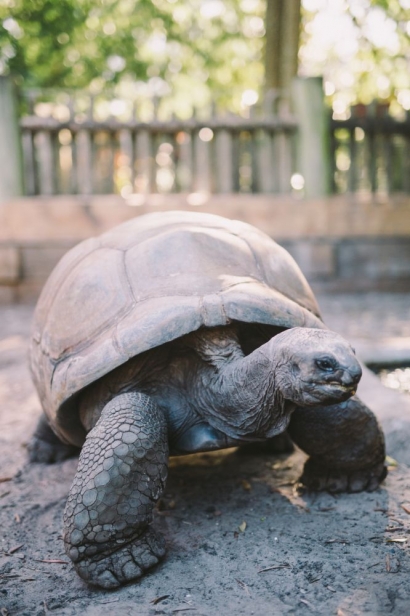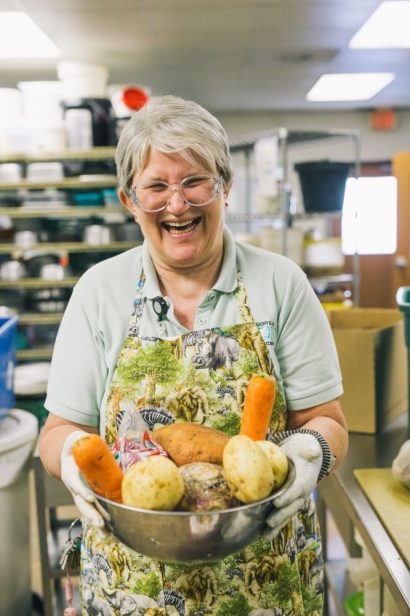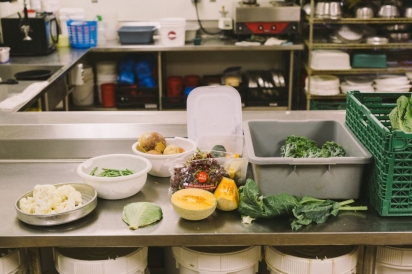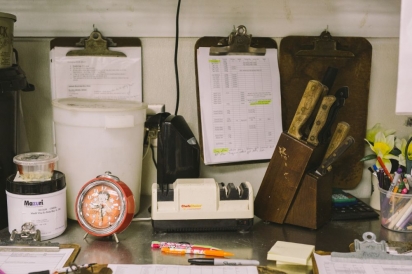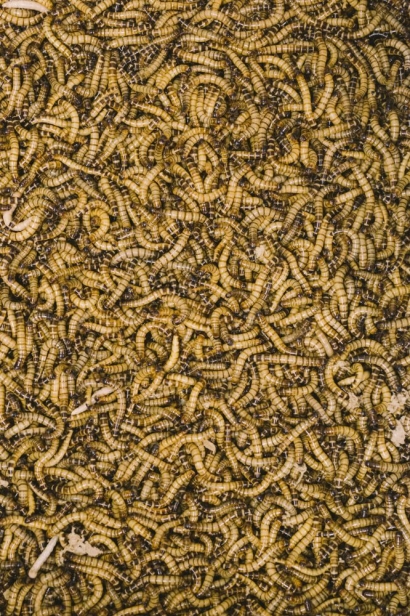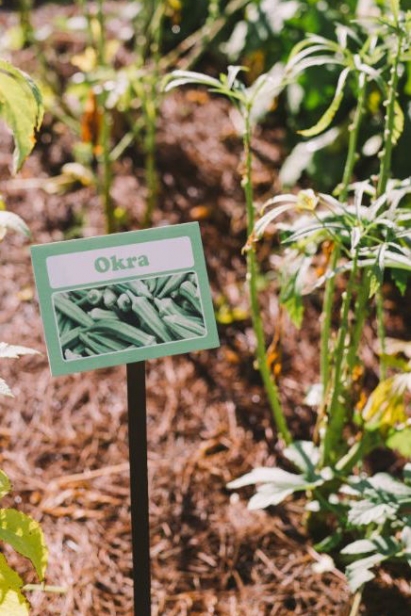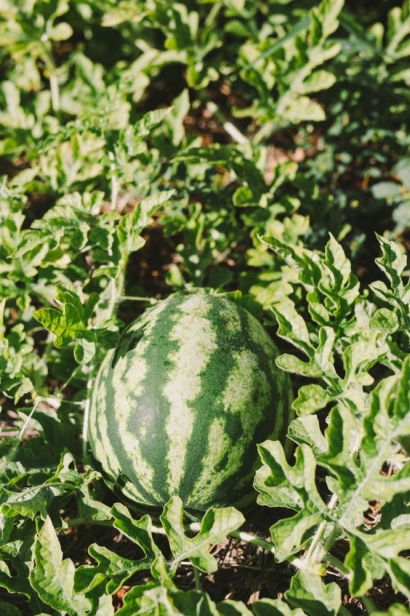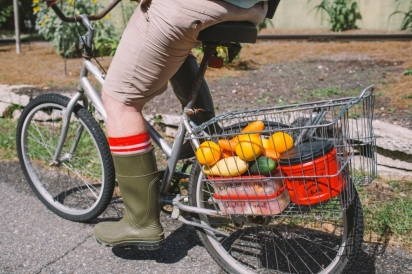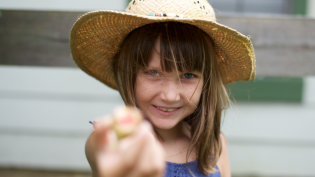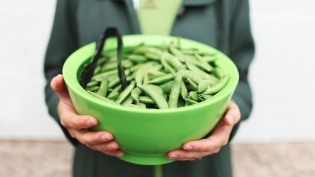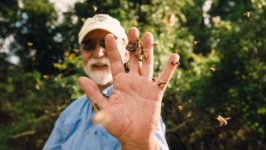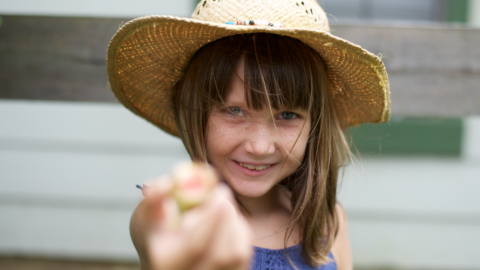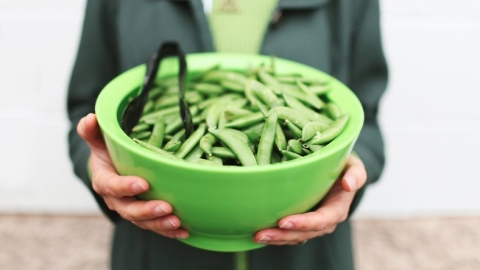What the Wild Things Eat
It was lunch time at the Jacksonville Zoo but Goober did not appear ready to chow down on his fresh veggies. First the 450-pound Aldabra tortoise needed some rubs on his neck, which he slowly extended out of his shell. After a little attention, he settled onto the ground with a solid plop and crunched away on his carrot. “He’s attracted to bright colors, and carrots are one of his favorites,” said Emily Mikus, the zookeeper formerly assigned to Goober and other reptiles. “He also gets mulberry leaves and hibiscus flowers, and to keep things interesting, I make him work for it.”
Keeping mealtime interesting is critical to the care and feeding of animals at the Jacksonville Zoo and Gardens, whose mission includes conservation efforts designed to protect animals and their habitats. Like any facility that feeds over 2000 residents, the Animal Nutrition Center at the Zoo, with a budget of about $500,000, has a diverse grocery shopping list. While there are many common food items on their list such as fresh produce, peanut butter and oats, you will also find small fish, alfalfa hay, crickets, mealworms, frozen rats and chicks on it as well, to reflect the Zoo’s philosophy of mirroring the natural diets of wild animals as much as possible.
As it is with the care and feeding of the human population, health concerns are top of mind for former Animal Nutrition Supervisor Betty Grogan, who prepares meals based on requirements from zookeepers. She notes the advances made in animal care in the 36 years she has worked at the Zoo, and she meticulously weighs lettuce, bananas, grapes and other foods headed to the gorilla compound. Attention is paid to the amount of protein, carbohydrates and sugar delivered at each meal to ensure a complete diet and help maintain a healthier lifestyle.
Pallets of waterfowl, koi and exotic gamebird food sit alongside bales of alfalfa hay in a storage room. The commissary kitchen, equipped with scales and mixing bowls, contains an assortment of fresh produce (along with buckets labeled ELEPHANT SCRAPS – NOT TRASH!), all used in “recipes” for each animal. “We still may supplement with grains, hay and prepared pellet food, but we balance that with vegetation similar to what the animals may find in the wild,” said Grogan.
To help support that effort, Zoo staff works with JEA and other agencies in the area during vegetation clean-up along highways to collect what is being trimmed. Called the Browse Program, the partnership benefits both the Zoo and its affiliates. The locally cleared vegetation, like wax myrtle, sweet gum, sycamore and sugarberry, mimics what many animals would eat in the wild and is used to supplement their daily diet.
A typical day for the animal nutrition supervisor includes preparing frozen fish pops for the otters and big cats (the popsicle craze is everywhere these days). Or fixing a menu of crickets, mealworms and cockroaches for the frogs, lizards, turtles and birds. “Crickets are finicky, you have to keep their cooler clean,” Grogan said. “We used to get Cajun crickets from Louisiana, but we have a supplier in Georgia that’s closer now.” Last fiscal year, Grogan served 825,000 crickets of various sizes and 363,000 mealworms.
Sourcing supplies is an ongoing activity for the animal nutrition supervisor, and while the Zoo receives many generous offers, she can’t always accept the donated food. “I may get a call about a truck-load of fruit or vegetables, or produce that didn’t sell and is considered seconds,” she said. “Unfortunately we can’t use the food if it doesn’t meet our quality standards, or if we can’t use it all before it goes bad. Then we have to dispose of the food, which we don’t like to do. Though bats like overripe fruit, … they can only eat so much!”
The quantity of food for animals can vary based on how much they have eaten the prior day. Sometimes, they get treats, to keep them from getting bored with their diets. For instance, the Komodo Dragon’s usual diet is a small rat or one chick. 0n Wednesday and Sunday, the lucky lizard gets one jumbo rat, 350 grams of medium rats and up to 3 tasty chicks. (The rats and chicks, by the way, are not live. They are bought frozen and then thawed before they are given to the Komodo dragon and other reptiles or amphibians that typically eat live prey.)
Zookeepers have a network around the country to keep up with the latest best practices in animal nutrition. “We are always calling other zoos to see how their animals are responding to food or to get ideas on how to improve diets,” said Nicole Monell, former Senior Mammal Zookeeper. She monitors her gorillas carefully for cardiac disease, the leading cause of death among the primates. “Diet is so important to keeping them healthy,” she said.
It’s not only what the animals eat but also how they are fed that impacts their well-being. Monell described the different approaches used to keep primates from getting bored with their diet. “We change the shapes and sizes of their food or move it around so they have to forage, like they would in the wild. Sometimes we make games out of mealtime. Because gorillas are very social animals, we play with them for interaction.” There’s also a puzzle feeder that gorillas and Guereza colobus monkeys have to spin to get food out. Vegetation from the Browse program is scattered throughout exhibits for snacks. And apparently, they sometimes like it dried out and crunchy.
Food and feeding is an essential consideration for the Zoo in meeting their mission. Much like humans, when it comes to survival, no matter the species, an essential component to health and well-being is access to food and the community around it.
For more information or to plan a visit to the Jacksonville Zoo & Gardens, visit their website at www.jacksonvillezoo.org



